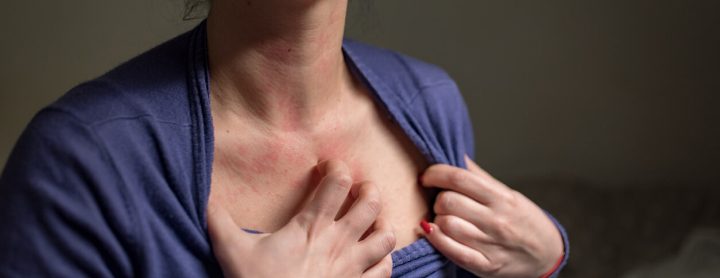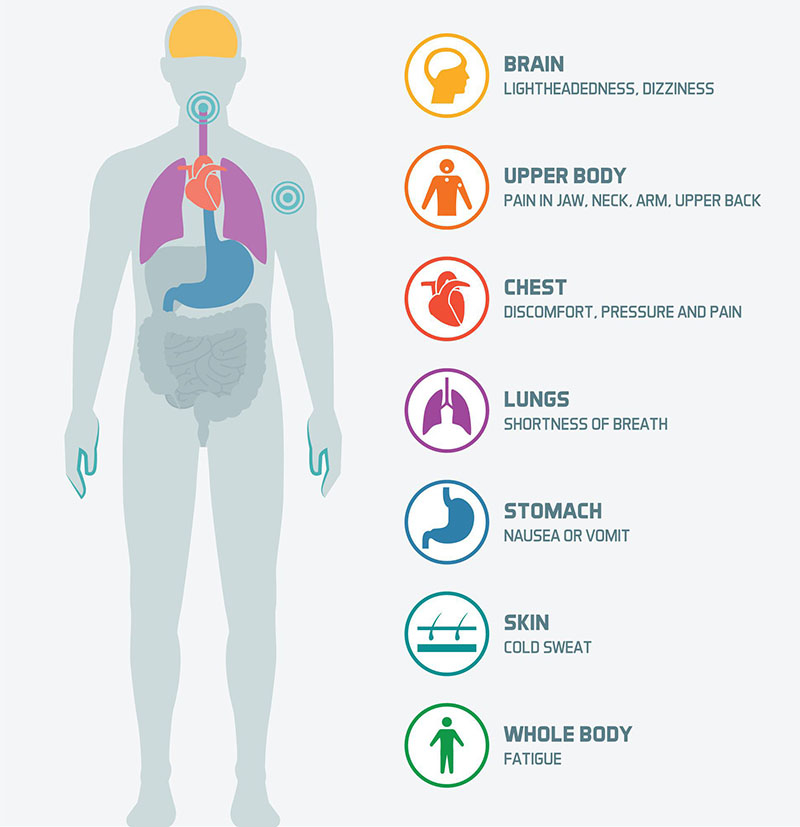

It is often mistaken as Myocardial infarction, dental pain, biliary or renal colic and other gastrointestinal disturbances such as duodenal ulcer and appendicitis. This pre-eruptive pain precedes the rash for several days and is often misdiagnosed. Some individuals describe the pain only when the affected region of the body is touched or induced by simple mild brushing against the skin. The pain may be constant or intermittent preceding the Shingle rash for several days to weeks. The pain may be burning, lancinating (tearing or sharply cutting), stabbing, or aching. Prodromal pain, which may radiate over the entire region supplied by the affected nerves. Approximately 75% of affected people experience prodromal pain on the affected dermatome where the Shingle rash will subsequently appear. Pain is the most common symptom of Herpes Zoster. However, in immunosuppressed patients, the disease may be severe and may be acutely disabling. The Shingle rash and inflammation is commonly limited to one dermatome in healthy hosts, but can occasionally affect two or more neighboring dermatomes. Herpes zoster in generally healthy adults is usually localized and benign. This dermatome can remain depigmented and hypoalgesic, or having little to no sensitivity to pain. The Shingle rash is often found clustered and confined within a dermatome.
Upper chest discomfort and rash skin#
The region of the skin affected that follows the underlying affected nerve path is called the dermatome. The blisters are usually confined to a narrow region of the face or trunk. The inflammation is usually unilateral, involving the thoracic, cervical, or cranial nerves in a band-like configuration. In immunocompetent hosts, or those people of strong immune system, the Shingle Rash will dry up and crust by 7 to 10 days and are no longer considered infectious. Within three to four days, these fluid-filled lesions become more elevated and occasionally hemorrhagic. The rash of Herpes Zoster starts as erythematous papules (red, circumscribed elevation of skin with no visible fluid), which quickly evolve into clustered vesicles (small, fluid-filled skin sacs or blisters measuring less than 5 millimeters in diameter) or bullae (fluid-filled skin blister more than 5mm in diameter). This form of disease is characterized by a painful, unilateral, vesicular rash, which usually occurs in a restricted band along the skin following the underlying affected nerve pathway. Herpes Zoster, also well known as Shingles, results from the awakening or reactivation of endogenous latent Varicella Zoster virus. The rash usually starts midline of the person’s body and spreads towards the sides and extremities. It is characterized by vesicular rash or lesions developing of the face, trunk and extremities. Primary infection of the mentioned virus causes Chicken Pox. Varicella Zoster virus is the main culprit of both these two clinically distinct diseases. Beginning as red, slightly elevated, circumscribed lesions that, in the course of 7-10 days, develop into vesicles and later dry up forming crusts in the characteristic and definitive Shingle Rash.


It is also referred to as Herpes Zoster, or simply, Zoster. An acute, unilateral, self-limiting inflammatory disease of the central nervous system, specifically the cerebral ganglia and the ganglia of the posterior nerve roots, and peripheral nerves caused by the Varicella Zoster virus which presents initially as a red rash that later accumulate fluid to form vesicles is a disease called Shingles.


 0 kommentar(er)
0 kommentar(er)
